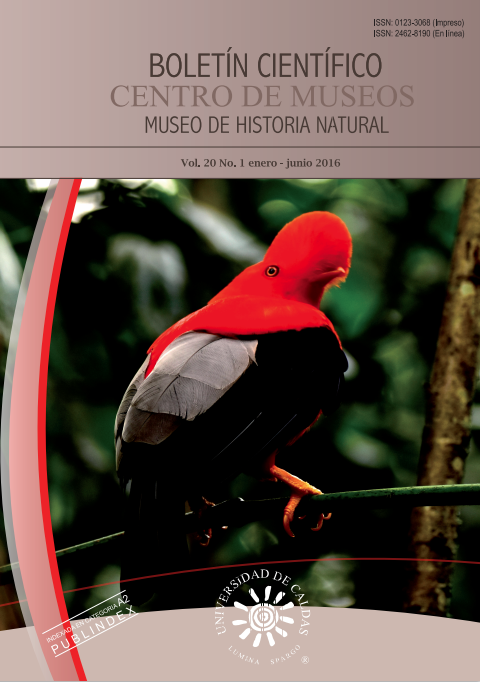Authors
Abstract
Aquatic macrophytes have been used in bioremediation processes, as they can absorb some dissolved substances and produce oxygen through photosynthesis. Based on the studies of toxic compounds removal by aquatic plants that allow wastewater treatment, this research had as main purpose to search the reduction of cyanide contamination and toxicity of waste water from sand washing in the cyanidation process in La Coqueta gold mine by means of the use of floating aquatic macrophytes (Eichhornia crassipes, Salvinia auriculata, Pistiastratiotes). Similarly, according to the results of qualitative tests, a goal was to find the final destiny of cyanide afterplants had absorbed it. Treatment of cyanide water was conducted through a system of tanks containing water from the mine in which plants for treatment were included and physicochemical control parameters (pH, oxygen saturation percentage and conductivity) were taken. Besides determination of cyanide and water toxicity, qualitative testsof nitrogenous compounds in plants and bioassays with Daphnia pulex in plants and in the treated water were determined. Based on the results of qualitative tests ti was evidenced that macrophytes can change their metabolism under stress conditions and this change in metabolism also induces the production of other types of secondary metabolites not present naturally (e.g. cyanogenic glycosides and alkaloids) in plants subjected to treatment. The removal of cyanide by these species was up to 86% at end of treatment, showing high efficiency for removal of toxic compounds of cyanide water from La Coqueta mine, as bioassays conducted using Daphnia pulex indicated that these organism could resist water characteristics after treatment with plants, noting that natural treatment environmentally safe and economically feasible can be made to decontaminate cyanide water from the washing of sands resulting from cyanide gold processing.
References
FINNEY, D. L., 1978.- Statistical Method in Biological Assay. London: High Wycombe.
HARBORNE, J. B., 1972.- Cyanogenic glucosides and their function. Phytochemicalecology. Academic Press, London: 104-123.
LUQUE, V. M., 2005.- Metabolismo del cianuro y del cianato en Pseudomonas pseudoalcaligenes CECT5344. Aplicaciones biotecnológicas. Pp. 23-57.
MALAGÓN, J. & A. GARRIDO.- 1990. Relación entre el contenido en glicósidos cianogenéticos y la resistencia a Capnodistene brionis (L.) en frutales de hueso. Bol. San. Veg. Plagas, 2: 499-503.
MALDONI, B., 1991.- Alkaloids: Isolation and Purification. Journal of Chemical Education. Universidad Nacional del Sur. Bahía Blanca, Argentina. 68: 700 - 703.
NOVOTNY, V. & H. OLEM, 1994.- Water Quality. Prevention, Identification and Management of Diffuse Pollution. New York: Van Nostrand Reinhold.
POULTON, J., 1990. Cyanogenesis in plants. Plant Physiology 94: 401-405.
QUIROGA P. N & V. OLMOS, 2009.- Revisión de la toxicocinética y la toxicodinamia del ácido cianhídrico y los cianuros. Acta Toxicológica de Argentina 17: 20-32.
VANLERBERGHE G. C. & L. McINTOSH, 1997.- Alternative oxidase: From Gene to Function. Annual Review of Plant Physiology and Plant Molecular Biology 48: 703-734.

 PDF (Español)
PDF (Español)
 FLIP
FLIP






















